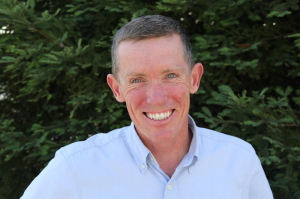Helping customers go green with Graniterock’s new concrete EPDs
Posted by Jon Erskine on Mar 31, 2015

As green building becomes increasingly popular, Graniterock is at the forefront by offering green products through its Granitegreen concrete initiative.
From the new Levi’s Stadium to Googleplex, developers, owners, architects and engineers are looking for best in class green products to meet the requirements of the U.S. Green Building Council’s Leadership in Energy & Environmental Design (LEED) certification program.
Projects are certified from basic to platinum based on the number of points they receive from following green building practices and using green materials. Each LEED point is tough to achieve and highly valuable. The latest version, LEED v4, gives points to building projects with products that have Environmental Product Declarations (EPDs). On Jan. 9, Graniterock became one of only 10 ready-mix concrete producers nationwide with a certified EPD for green concrete mixes.
An EPD provides performance data about the lifetime environmental impacts of a product. It is for building materials what a nutrition label is for food. Instead of listing calories, fat and sugar, an EPD describes a product’s environmental impacts such as how much energy and water went in to producing the product and how much greenhouse gasses and wastes were produced as a result. It considers the “cradle-to-gate” lifetime environmental impacts from all steps of producing concrete, including harvesting and processing sand and rock into aggregate and cement, shipping it to the plants, processing it into ready-mix, loading it into mixer trucks and getting the trucks to the plant gate. Certified EPDs follow a rigorous standardized set of rules for collecting and analyzing quality assured and comparable environmental data.
They are third-party certified and provide buyers with the confidence of knowing the environmental performance of a specific product has been reviewed and validated by an independent party with expertise in environmental impact analysis. Graniterock’s EPDs were certified by the National Ready Mix Concrete Association (NRMCA), the leading technical experts on concrete EPDs. The EPDs are available on our website www.graniterock.com. The rigorous data collection, analysis and review process took about a year to complete. The effort sets Graniterock apart from other producers because it shows our commitment to customers, products and the environment.
Graniterock’s EPDs cover 30 concrete mixes from our plants in Salinas, Seaside, Santa Cruz, San Jose and Redwood City. The mixes are for a variety of applications, range in strength from 3,000 psi to 6,000 psi, and contain up to 50 percent replacement of Portland cement with supplementary cementing materials such as recycled fly ash and ground granulated blast furnace slag. The EPD for each mix can help a project qualify for one LEED v4 point. A project must use 20 products with EPDs from 5 manufacturers to qualify.
Currently there are only about 300 EPDs for all types of product manufacturers – carpets, windows and doors - so each EPD is valuable. LEED v4 also provides an additional bonus point for materials with EPDs that beat a regional benchmark for environmental performance. Graniterock’s products outperform the environmental characteristics of NRMCA’s benchmark standards for competing mixes produced regionally by others, and therefore help projects qualify for the additional point.
A key to Graniterock’s environmental success is the use of local materials produced with the highest environmental standards. Much of our aggregate is shipped by rail, which uses much less fuel to move material than truck. Also, we purchase our cement locally. Together, the combination of local, high quality material produced to the highest standards and shipped to the Monterey Bay and San Francisco Bay Area results in concrete that is best in class and a superior alternative to products shipped great distances from areas with lesser environmental standards.
Back to all Blogs
